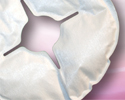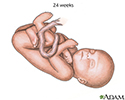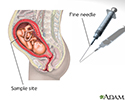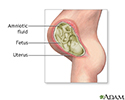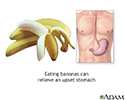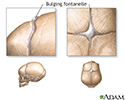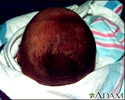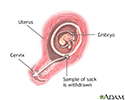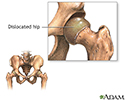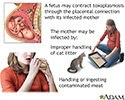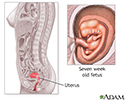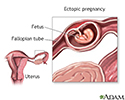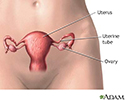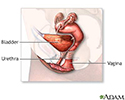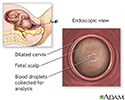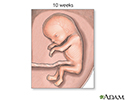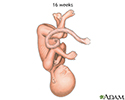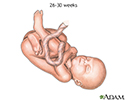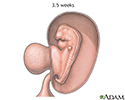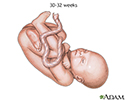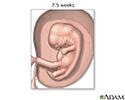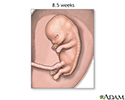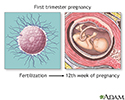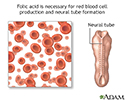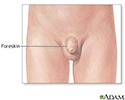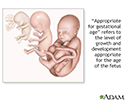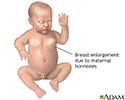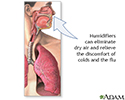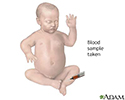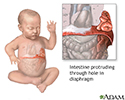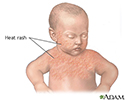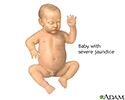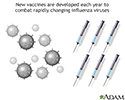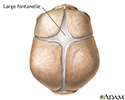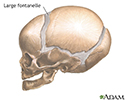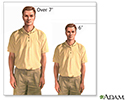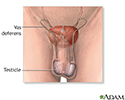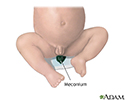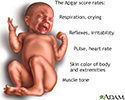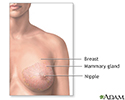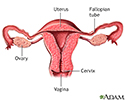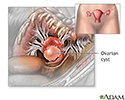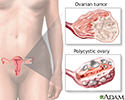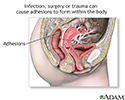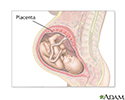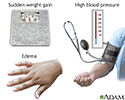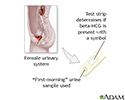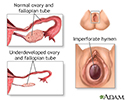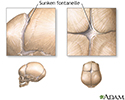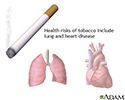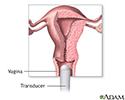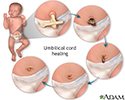Multimedia Gallery
NICU consultants and support staff
If your newborn needs to be admitted to the neonatal intensive care unit, or NICU, a group of different medical professionals will be there to help. Here's a rundown of some of the consultants and support staff you can expect to meet in the NICU.
Each person who works in the NICU has a different specialty: Your bedside NICU nurses work most closely with your baby, providing care and observing closely for important changes. A neonatologist specializes in the health problems of newborns. They supervise and coordinate care. A cardiologist is trained to diagnose and treat diseases of the heart and blood vessels. If a baby has a heart defect, a cardiovascular surgeon will perform the surgery to fix it.
An infectious disease specialist treats babies who have serious infections, including infections of the blood, brain, or spinal cord. A neurologist diagnoses and treats conditions of the brain, nerves, and muscles. You might see a neurologist if your baby has seizures, or is born with a nervous system condition like spina bifida. When the problem needs to be corrected with surgery, a neurosurgeon will perform the operation.
An endocrinologist diagnoses and treats hormone problems, such as diabetes. Gastroenterologists are expert at treating digestive problems of the stomach and intestines. A hematologist-oncologist treats blood disorders and cancer. An infant might see this type of doctor for a problem with blood clotting. A nephrologist focuses on diseases of the kidneys and urinary system. If your baby was born with a kidney problem, you will talk to this doctor about treatments, and possibly the need for surgery. Pulmonologists treat newborn lung problems, such as respiratory distress syndrome. You might see this doctor if your baby was born with a breathing condition. Then you'll work with a respiratory therapist to treat the problem.
If you had a very high-risk pregnancy, you'll work with a maternal-fetal medicine specialist. This doctor can help if your baby was born prematurely, or you had twins or other multiples. Babies who are born with eye defects see an ophthalmologist, a doctor who diagnoses and treats eye problems. If your newborn needs x-rays, an x-ray technician will take the test, and a radiologist will read the results.
Sometimes babies are born with or at risk for developmental delays. If that is the case, a developmental pediatrician will test your child, and help you find the right care once you leave the NICU. The pediatrician may recommend that you see an occupational or physical therapist to assess your baby's reflexes, movement, and feeding. While you're in the NICU, you'll also see a neonatal nurse practitioner. This specialist will work closely with your doctor to make sure your baby gets just the right care.
Being in the NICU can feel scary and new at first. Don't be afraid to ask questions. Your NICU medical team is there to care for your baby, and to make sure you're prepared to take over that care once you get home.
NICU consultants and support staff
Review Date: 10/20/2024
Reviewed By: Neil K. Kaneshiro, MD, MHA, Clinical Professor of Pediatrics, University of Washington School of Medicine, Seattle, WA. Also reviewed by David C. Dugdale, MD, Medical Director, Brenda Conaway, Editorial Director, and the A.D.A.M. Editorial team.
Animations
- Breast engorgement
- Cell division
- Cesarean section
- Conception - general
- Conception - pregnancy
- Conception of identical twins
- C-section
- Early labor
- Egg cell production
- Egg production
- Endometriosis
- Fetal ear development
- Formation of twins
- Human face formation
- Infant formulas
- Kids - How big is the baby?
- Kids - How does the baby co...
- Kids - Is it a girl or boy?
- Kids - Umbilical cord
- Kids - Where do babies come...
- Newborn jaundice
- NICU consultants and suppor...
- Ovulation
- Placenta delivery
- Placenta formation
- Preeclampsia
- Pregnancy
- Pregnancy care
- Sperm production
- Sperm release pathway
- Storing breast milk
- The role of amniotic fluid
- Twin-to-twin transfusion sy...
- Ultrasound
- Vaginal delivery
Illustrations
- 24-week fetus
- Abnormal discharge from the...
- Abnormal menstrual periods
- Absence of menstruation (am...
- Amniocentesis
- Amniocentesis
- Amniotic fluid
- Amniotic fluid
- Anatomy of a normal placenta
- Antibodies
- Baby burping position
- Bananas and nausea
- Blood cells
- Blood test
- Breast infection
- Breastfeeding
- Bulging fontanelles
- Candida - fluorescent stain
- Caput succedaneum
- Cesarean section
- Cesarean section
- Cesarean section
- Childbirth
- Chorionic villus sampling
- Congenital hip dislocation
- Congenital toxoplasmosis
- Crying - excessive (0 to 6 ...
- Delivery presentations
- Developmental milestones
- Early weeks of pregnancy
- Ectopic pregnancy
- Emergency Childbirth
- Emergency Childbirth
- Endocrine glands
- Endometriosis
- Endometritis
- Erythroblastosis fetalis - ...
- Female breast
- Female reproductive anatomy
- Female reproductive anatomy
- Female reproductive anatomy...
- Female urinary tract
- Fetal blood testing
- Fetal head molding
- Fetus at 10 weeks
- Fetus at 12 weeks
- Fetus at 16 weeks
- Fetus at 26 to 30 weeks
- Fetus at 3.5 weeks
- Fetus at 30 to 32 weeks
- Fetus at 7.5 weeks
- Fetus at 8.5 weeks
- First trimester of pregnancy
- Folic acid
- Folic acid benefits
- Folic acid source
- Follicle development
- Fontanelles
- Foreskin
- Gestational ages
- Gestational diabetes
- Gonadotropins
- Head circumference
- Heat rash
- Height/weight chart
- Hormonal effects in newborns
- Humidifiers and health
- Hysterectomy
- Infant blood sample
- Infant care following delivery
- Infant diaphragmatic hernia
- Infant heat rash
- Infant intestines
- Infant jaundice
- Infantile reflexes
- Influenza vaccines
- Intraductal papilloma
- Intrauterine transfusion
- Jaundiced infant
- Large fontanelles
- Large fontanelles (lateral view)
- Macrosomia
- Male reproductive anatomy
- Male reproductive anatomy
- Male urinary tract
- Mammary gland
- Meconium
- Morning sickness
- Moro reflex
- Newborn head molding
- Newborn test
- Normal female breast anatomy
- Normal uterine anatomy (cut...
- Ovarian cyst
- Ovarian hypofunction
- Overproductive ovaries
- Pelvic adhesions
- Pelvic laparoscopy
- Placenta
- Placenta
- Placenta
- Placenta previa
- Polyhydramnios
- Preeclampsia
- Pregnancy test
- Primary amenorrhea
- Primary infertility
- Secondary amenorrhea
- Secondary infection
- Side sectional view of fema...
- Single palmar crease
- Skull of a newborn
- Slit-lamp exam
- Sperm
- Stein-Leventhal syndrome
- Sunken fontanelles (superio...
- Tobacco health risks
- Transvaginal ultrasound
- Ultrasound in pregnancy
- Ultrasound, color - normal ...
- Ultrasound, normal fetus - ...
- Ultrasound, normal fetus - ...
- Ultrasound, normal fetus - ...
- Ultrasound, normal fetus - face
- Ultrasound, normal fetus - ...
- Ultrasound, normal fetus - foot
- Ultrasound, normal fetus - ...
- Ultrasound, normal fetus - ...
- Ultrasound, normal fetus - ...
- Ultrasound, normal fetus - ...
- Ultrasound, normal placenta...
- Ultrasound, normal relaxed ...
- Umbilical cord healing
- Uterus
- Vaginal bleeding during pre...
- Well baby visits
- Yeast infections

 Bookmark
Bookmark



























